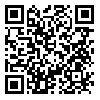Volume 7 -
MEJDS (2017) 7: 65 |
Back to browse issues page
Download citation:
BibTeX | RIS | EndNote | Medlars | ProCite | Reference Manager | RefWorks
Send citation to:



BibTeX | RIS | EndNote | Medlars | ProCite | Reference Manager | RefWorks
Send citation to:
Sofiani L, Bafandeh Gharamaleki H, Ezati M. A Comparative Study of Theory of Mind and Body Image between People with Motor Disabilities and Normal people. MEJDS 2017; 7 :65-65
URL: http://jdisabilstud.org/article-1-638-en.html
URL: http://jdisabilstud.org/article-1-638-en.html
1- Tabriz Islamic Azad University
2- Azarbaijan Shahid Madani University
2- Azarbaijan Shahid Madani University
Abstract: (5266 Views)
Abstract
Objective: Theory of Mind (ToM) is the ability to attribute mental states beliefs, intents, desires, pretending, knowledge, etc. to oneself and others and to understand that others have beliefs, desires, intentions, and perspectives that are different from one's own. This study aimed to compare theory of mind and body image between normal individuals and people with physical disabilities.
Methods: This study was a causal-comparative one. The population of the study consisted of all people with physical disabilities in Salmas-Iran. The size of the sample was calculated to be 44 in accordance with Morgan table. A total of 44 participants with physical disabilities as well as 44 normal individuals were recruited. Each of
Participants completed Baron-Cohen neuropsychological test of mind reading from the eye as well as Body Image Concern Inventory (BICI) developed by Littleton. The participants in both groups were matched in terms of gender. T-test and multivariate analysis of variance (MANCOVA) were used to analyze the data.
Results: The results showed a significant difference between theory of mind in motor disabled and normal people (P<0.05). In other words, people with motor disabilities have less healthy theory of mind than normal individuals. The results also showed that people with motor disabilities had negative body image about their bodies.
Conclusion: It can be concluded that people with physical disabilities often have lower body than normal people. In other words, physical disability has a negative impact on body image
Type of Study: Original Research Article |
Subject:
Psychology
Send email to the article author
| Rights and permissions | |
 |
This work is licensed under a Creative Commons Attribution-NonCommercial 4.0 International License. |




